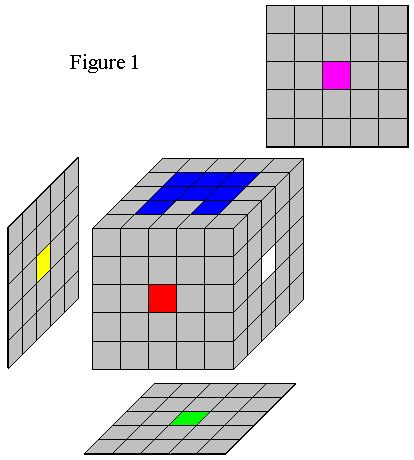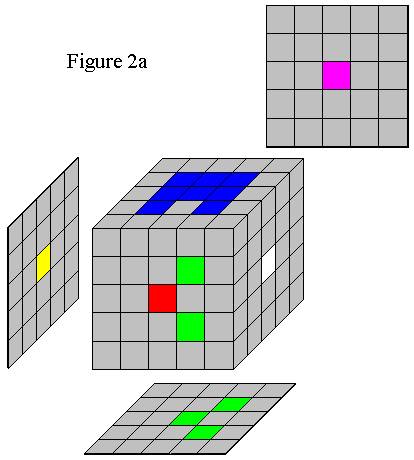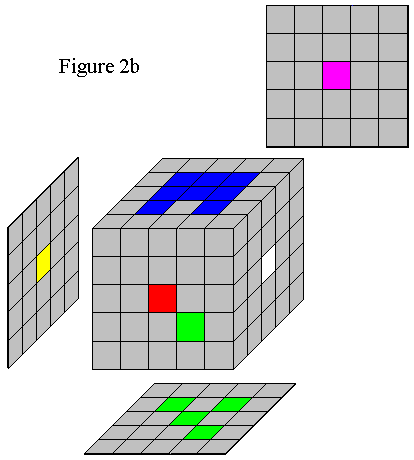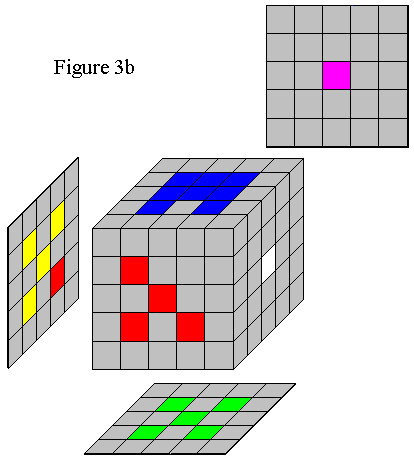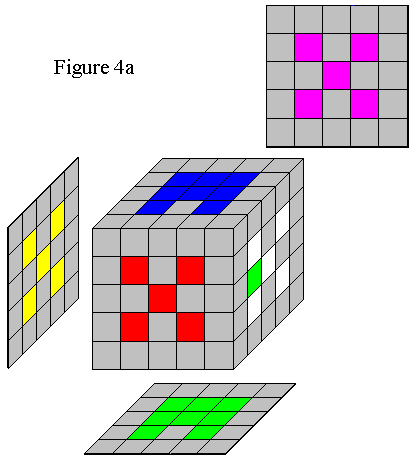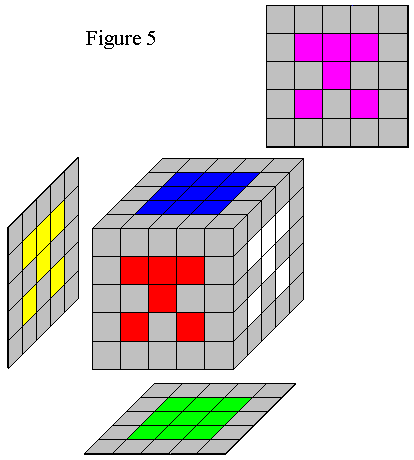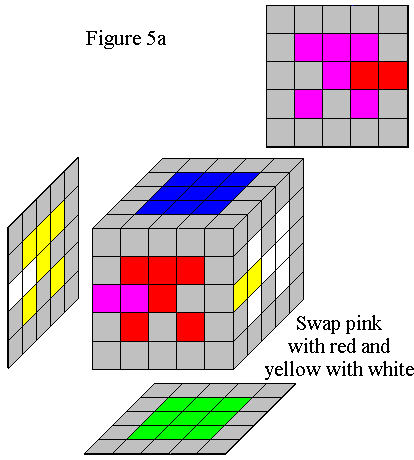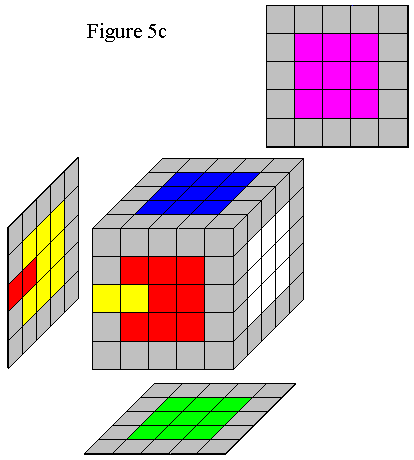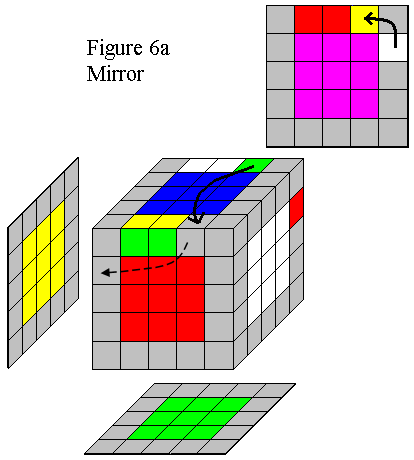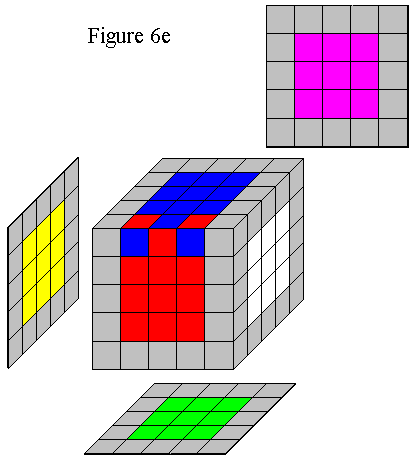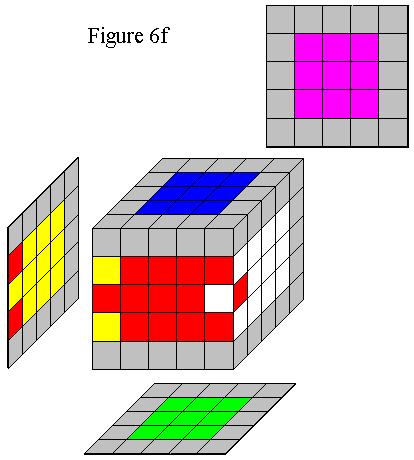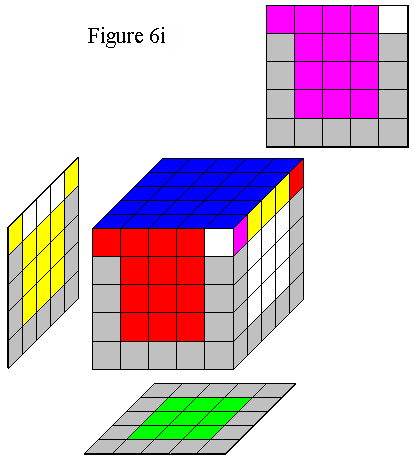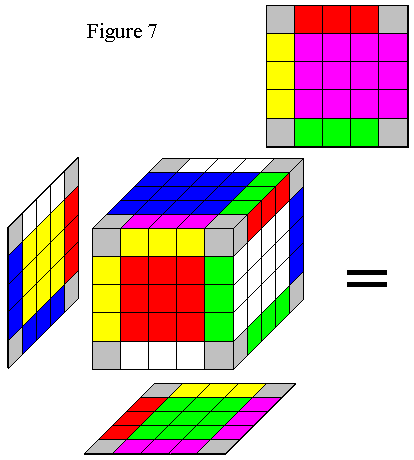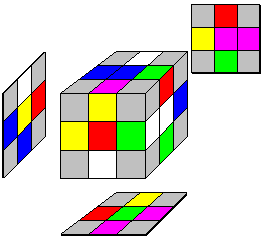Solving the 5x5x5 (Professor) Cube
These instructions can be used to solve a 5x5x5 cube, also known as the professor cube due to its difficulty. These directions are a graphical version of those given by Jacob Davenport.
Steps
- 1. Solve the top points and crosses
- 2. Solve the bottom points
- 3. Solve the remaining points (on the sides)
- 4. Complete the top and bottom crosses
- 5. Complete the remaining crosses (on the sides)
- 6. Associate wings with their appropriate edge pieces
- 7. Solve the 3x3x3
Legend: Key to Symbols for the Moves

The figures in this document represent a sample cube. Although the colors on your personal cube may be different than the figures, I feel that the colored figures will still be helpful in solving the cube. I would suggest matching as many colors on your cube as possible to the figures, then making mental notes about which colors correspond between your cube The diagrams show all six sides of the cube by pretending that mirrors are being held up so that you may see the "hidden" sides.
The directions for what parts of the cube to turn and when are given in a code that is relative to the current positioning of the cube. Each side descriptor refers to a side with respect to the figure the move is referenced to. This means that the front side can be a different color, depending on the diagram being used. See Move 1 of the 3x3x3 Rubik's Cube page for instructive diagrams to illustrate the moves.
The Letters:
The side descriptors are:
- U for the top (Upper) side,
- u for the 2nd layer down from the top (just below the upper side),
- L for the left hand side
- l for the 2nd layer in from the left hand side
- F for the front side
- f for the 2nd layer in from the front side
- B for the back side
- R for the right hand side
- r for the 2nd layer in from the right hand side
- D for the down (bottom) side
- d for the 2nd layer up from the down (bottom) side, and
- H for the horizontal center slice (between u and d).
The Numbers:
Since the lower case L: l looks like the number 1, a letter by itself means to turn the side clockwise one quarter turn. A letter with a 2 following it means to turn the side two turns (halfway around). A letter with an apostrophe (') means to turn the side counterclockwise one quarter turn (a -1 can be used in place of an apostrophe, but the apostrophe takes up less space).
- For example, U F2f2 D' Ll means to rotate the upper side clockwise one quarter turn, the front side and 2nd layer in from the front side clockwise twice (half way around), the down (bottom) side counterclockwise one quarter turn, and the left side and second layer in from the left side clockwise one quarter turn. Look directly at the specified side indicated to determine which direction is clockwise or counterclockwise.
- For the central horizontal slice H, look at the cube through the top side to determine the clockwise direction.
The Pieces (see the Key cube above):
- The piece in the center of each side is the center piece
- Next to each center is a "cross" piece since the cross pieces form a cross or + with the center piece
- Diagonally from each center piece are four "point" pieces
- Each side of the cube has five pieces along it: Corner, Wing, Edge, Wing, Corner
In the figures, any gray pieces represent pieces that don't matter and can be any color. To increase clarity, I have shown a lot of colored pieces. In most cases, the figures represent an example of the situation being described, while the colors don't have to match perfectly.
